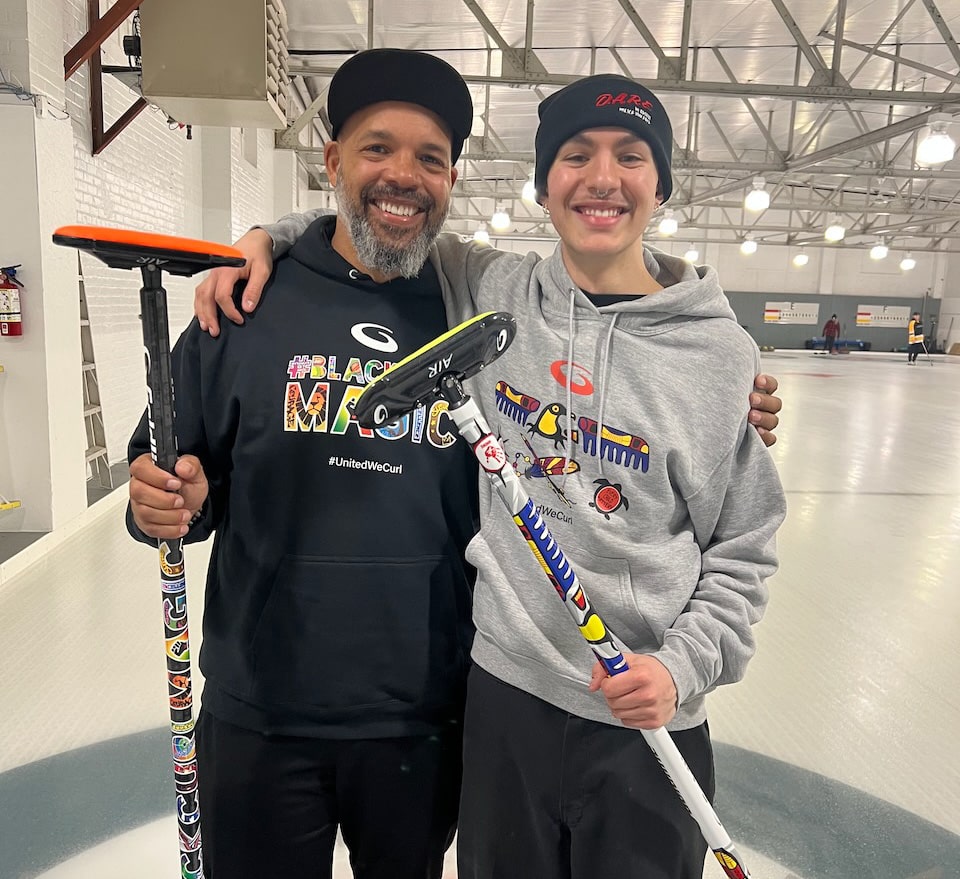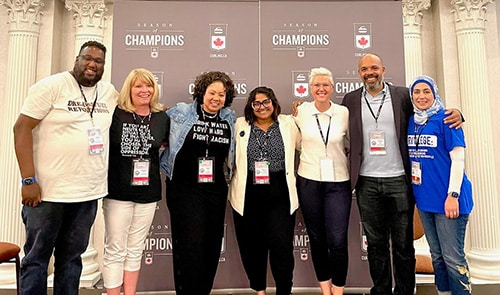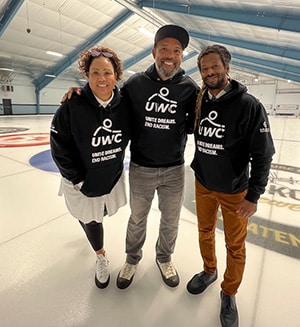
Dr. Richard Norman discusses the new role and direction of curling
Curling Canada recently welcomed Dr. Richard Norman to its team as Director of Future and Community Innovations. If you’re not clear on what this title means, that’s okay.
With a slight laugh, Richard would be the first to admit that it’s not the most obvious of titles. In simple terms, Richard’s goals are to look at all levels of curling and help create functional strategies to bring about constructive and impactful changes in curling at the community level, developing communications and generating action to move curling forward toward its goals of inclusion.
Sports have always been a part of Richard’s life, playing football and the like. When he entered the world of tennis late in life and began playing tournaments at “old school” clubs that still followed traditional rules, such as “white tennis players,” he began to think about sporting traditions and the barriers they could create. This eventually led to him earning a master’s degree in Strategic Foresight and Innovation, where he looked at the future of tennis in Canada.
He continued his research, critically examining social issues in sport, and completed his dissertation in 2020 with a focus on the intersection of race, colonialism, and sport. In particular, he was interested in the barriers they put up for non-traditional people to participate. This path culminated in the first-ever Diversity and Inclusion Symposium in Curling held in May 2022, co-hosted by Dr. Heather Mayer (former Chancellor) and Dr. Simon Barrick.

Through this seminar, they had some very frank discussions. Richard deepened his relationship with Katherine Henderson, then CEO of Curling Canada, and others associated with curling. This eventually led him to take on his current role. Because he understands that to have the greatest impact, you need to step in and start taking action within the space, he is passionate about participating in the inner workings of Curling Canada and has the ability to help influence the change they are looking for.
For Richard, the truth is that none of this is a problem unique to curling. All sports are at risk if appropriate measures are not taken. Discussing broad ideas without concrete action or data will yield little real results. The way forward is to identify systems that need to be dismantled and rebuilt into structures that are fairer, safer, and designed to be fully inclusive.
One of the first projects Richard took on in his new role was to create a comprehensive illustration of what the curling system in Canada looks like, detailing a clear representation of the factors, stakeholders and influences that influence curling centers today. This project aims to create a baseline that can then be used as a reference on what steps need to be taken to generate this needed forward movement.
Another project led by Richard, called “Bridging Boundaries,” focuses on “How do we make real connections with communities that are not represented in curling?” Through Bridging Boundaries, Curling Canada has collaborated with grassroots clubs to examine specific demographic and community dynamics. With the help of Visionnaire (a consulting firm specializing in outreach to diverse communities), the project is designed to help curling centers evaluate what steps might be most appropriate for attracting non-traditional curlers to the sport and how Curling Canada can help them maximize any opportunities. .
Richard believes one of the biggest contributions Curling Canada can make moving forward is to find ways to better support grassroots organizations in creating the relationships they need to ensure healthy engagement at their facilities. If the goal of curling is a more open and welcoming community, then curling needs to make connections and support those communities. Most of the work should be done outside the club, reaching out to local groups wherever they are, such as the Sikh temple or mosque across the street, the Aboriginal Cultural Center or 2SLGBTQIA+ social leagues and starting contact there. “The most important part of this is asking racialized or marginalized groups how we (as the curling community) can help them; it’s not just about curling,” he states.
It is important that we move forward together and not go into spaces and tell them what curling can do for them, but rather listen, ask and learn what curling and curling can do to support their needs. Curling Canada is committed to helping facilitate these connections and supporting curling centres; However, it needs to open up these types of opportunities.

Another important focus for Richard is to help Curling Canada achieve greater transparency regarding what happens within the organization. One of the best ways to communicate this is through storytelling. He believes Curling Canada needs to tell the stories of things that are happening internally and in the broader community regarding diversity, equality and inclusion. It is not a question of perfection or completion of everything, but of acknowledging the steps taken today. It is about being clear about motivations and communicating what is happening which will lead to increased ability to communicate with communities about inclusion issues in the future. Large-scale structural change does not happen all at once, and it is important to celebrate the steps taken along the way.
Richard admits there is a misconception regarding traditions, rules and regulations within sport, as they are not static and change more often than people realise. When it comes to curling and its future, it’s about what we consider to be an integral part of the sport and what can be changed. While tradition may be comforting for some, it can be a barrier for others, especially those who don’t see themselves in the sport from a historical perspective. Changing perspectives to see icons and cultures differently helps to interrogate what is “truly necessary to sustain in this sport.” While they may be cherished in many cases, simple adjustments can create new paths for others to feel like they belong.
When Richard recalls his first experiences with curling, it was in the experience that followed that he realized, “I’m sitting with high-performance athletes… having a drink and a chat, and building new relationships with the best curlers in the world.” This is something unique to curling and rooted in the heart of the sport, the sociability and simple nature of even those at the top. It’s something special and a vital part of how the sport attracts others and grows.
The question on curling’s faces is, “What is the future of this sport, and are we prepared to take the steps necessary to make this sport truly inclusive?”






